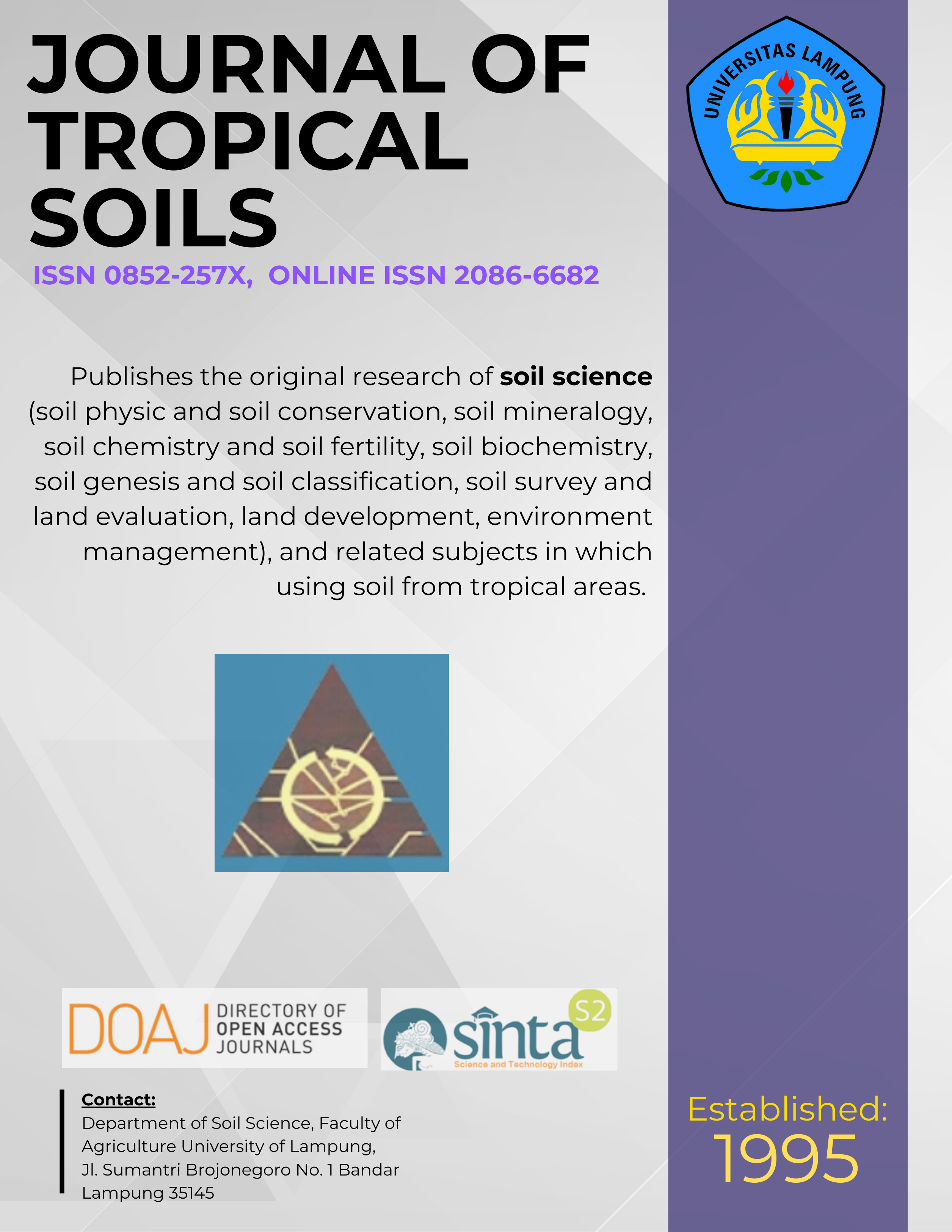Relationship between Sampling Distance and Carbon Dioxide Emission under Oil Palm Plantation
Main Article Content
Abstract
A car
bon dioxide emission on peatland under oil palm plantation was highly varied due to many factors involved. The objectives of the research were to evaluate the effect of sampling distance from center of oil palm tree on Carbon dioxide flux, and to study the factors that cause variability of carbon dioxide flux on peatland under oil palm plantation. The study was conducted on peatland at Arang-Arang Village, Kumpek Ulu Sub-District, Muaro Jambi District, Jambi Province, on six-years old oil palm plantation. The study was conducted in the form of observational
exploratory. Emission measurements were performed on 5 selected oil palm trees at points within 100, 150, 200, 250,
300, 350, and 400 cm from the center of trunk. Carbon dioxide flux was measured using (IRGA), Li-COR 820. The results showed that there was significant correlation between the distance of sampling from center of oil palm tree and Carbon dioxide flux. The farther distance from the tree, the more decreased of Carbon dioxide flux . Before applying fertilizer, variability of soil fertility was not significantly correlated with the flux of Carbon dioxide, so the difference of Carbon dioxide flux based on distance sampling can be caused by root distribution factor. After fertilizer application, variability of Carbon dioxide flux under the oil palm tree were not only affected by differences in root distribution but also greatly influenced by fertilization.
Keywords: Carbon dioxide flux, distance sampling, oil palm, peat, root-related respiration
Downloads
Article Details
Issue
Section
License for Authors
Authors who publish with this journal agree to the following terms:
- Authors retain copyright and grant the journal right of first publication with the work simultaneously licensed under a Creative Commons Attribution License that allows others to share the work with an acknowledgement of the work's authorship and initial publication in this journal.
- Authors are able to enter into separate, additional contractual arrangements for the non-exclusive distribution of the journal's published version of the work (e.g., post it to an institutional repository or publish it in a book), with an acknowledgement of its initial publication in this journal.
- Authors are permitted and encouraged to post their work online (e.g., in institutional repositories or on their website) prior to and during the submission process, as it can lead to productive exchanges, as well as earlier and greater citation of published work (See The Effect of Open Access).
License for Regular Users
Other regular users who want to cite, distribute, remix, tweak, and build upon author’s works, even for commercial purposes, should acknowledge the work’s authorship and initial publication in this journal, licensed under a Creative Commons Attribution License.

